A skirt is an element of a woman’s wardrobe that differs in its manufacturing features, style and color. You can create a life-size pattern of your favorite model absolutely free of charge, based on your body parameters, which will allow you to make any desired model without additional professional skills, which will perfectly fit your figure and emphasize its advantages.
Necessary materials
Free skirt patterns in full size are provided below in the article.

To make the product you will need:
- Take the measurements necessary to construct the pattern, measuring the parameters of the figure in the underwear that will be worn under the finished skirt.
- Select the product model and the required fabric.
Choice of style
Choosing a style is the first step to making a skirt.
There are several varieties of the product:
- miniskirts that are above the knee but fall below the mid-thigh;
- a straight skirt of a classic style that fits tightly to the figure;
- a wrap skirt consisting of two pieces overlapping one another;
- sun skirt, cut on a circle basis;
- a tight, hip-hugging pencil skirt that tapers to the bottom;
- pleated skirt with small folds;
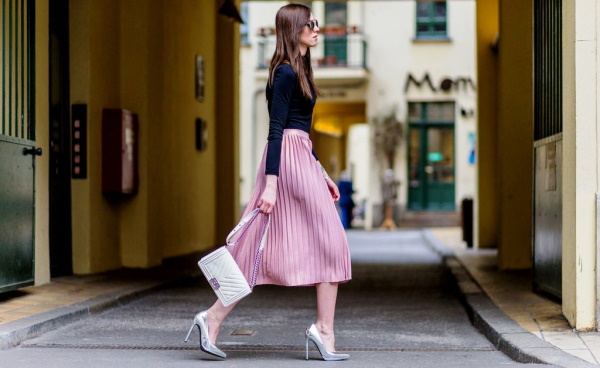
- a yoke skirt with one or several pleats;
- A-line skirt that is narrow at the top and flares out towards the bottom.
Professionals do not recommend that novice seamstresses try to make complex models. Without professional skills and experience in sewing, it will be easiest to sew an A-line skirt, a sun skirt or a straight model that does not require working with small details.
Selection of material
The material for sewing the product should be selected depending on the season and the cut of the skirt:
- It is recommended to make a sun skirt from chiffon, silk or thin wool;
- a straight model requires the use of thick fabric: tweed, cotton or jersey;
- Pleated skirts are made from suit fabrics that hold folds well;
- Lightweight material is used for sewing maxi models.
Professionals advise beginning seamstresses to choose cotton, tulle, denim or knitwear. Velvet, chiffon or silk should not be used for sewing.
Taking measurements
Free skirt patterns in full size should be made according to measurements taken without the use of corrective underwear that tightens the hips and buttocks, which can distort the actual measurements.

It is recommended to take measurements in the underwear that you plan to wear with the finished product. The measuring tape should not hang freely, but fit tightly to the body. Professionals advise entrusting the taking of measurements to another person, which will help to avoid possible mistakes.
Measurements required for sewing the product:
| Name of measurement | How to shoot |
| Hip circumference (HC) | Measurements are taken on the most convex parts of the buttocks. If there are fatty deposits, the measurement should be taken on the buttocks and slightly below them. |
| Waist circumference (WC) | The narrowest part of the figure is measured. |
| Hip height (HH) | Requires measuring the lateral distance from the waist line to the hip line. |
| Skirt length (SL) | It represents the size of the desired product, starting from the waist line. |
When taking measurements, it is not recommended to suck in your stomach and try to appear slimmer. Experts recommend taking the most relaxed pose possible, which will help to avoid errors when taking measurements. Independently constructing a pattern is considered a complex process that requires special skills, so novice craftswomen are advised to use ready-made patterns posted on the Internet, adjusting them depending on their own values.
Materials needed to make the skirt:
- fabric, size 2-2.5 m;

- pencil or tailor's chalk;
- pattern or tracing paper;
- threads of 2 shades for basting the product and sewing it;
- needles of different lengths and thicknesses;
- tailor's pins for fastening parts;
- sewing machine with speed control and seam processing function;
- scissors for cutting fabric;
- rubber;
- doublerin.
Sun skirt
Free full-size skirt patterns can be adjusted to fit your figure and used to cut fabric. The easiest to make is a sun skirt with an elastic band, which goes well with any shoes. To make it, you will need to know the length of the product (LI) and the waist circumference (WC). The pattern of the product is constructed in the shape of a circle, inside which there will be another circle - a belt.
The pattern should be constructed on paper folded in half. To make the pattern, you need to add 1.5 cm to the waist circumference (WC) value for freedom of fit of the product. The length of the circumference corresponds to the product of the number and 2 radii, therefore, in order to calculate the radius of the circle-skirt, you should divide the length of the circumference (Waist circumference) by a value equal to 2: R = WC / 6.28.
To construct the pattern:
- from the top point on the paper, you need to set aside segments AA1 and AA2 equal to the resulting radius;
- point A will be the vertex of the resulting right angle, from which, to create a belt, on both sides of it, you need to set aside segments corresponding to the radius of the circle;
- using a ruler and compass, the resulting points should be connected with a dotted circle;
- To construct the second circle from point A, you need to set aside segments AH1 on both sides of the angle, equal to the length of the product (DI) and connect them with a dotted semicircle.
The resulting pattern needs to be cut out, additionally adding seam allowances to it, and laid out on the fabric. For the belt, you need to make a rectangle with a length corresponding to the OT value + seam allowances. The width of the product should be 2 times greater than the size of the belt on the finished product with the addition of seam allowances.
To make the skirt:
- The parts of the product cut out of the material must be stitched along the side seams to form a finished circle.

- When stitching, the fabric should be pulled tight so that it does not wrinkle. The side edges should be processed with an overlock.

- At the top of the product you need to make a drawstring for the elastic.
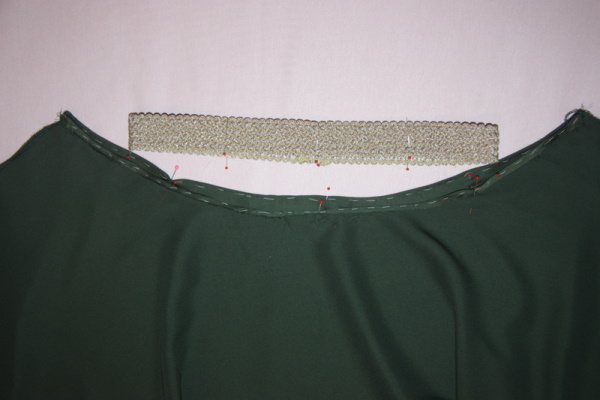
- To do this, the top edge of the skirt should be turned to the front side, basted and ironed.
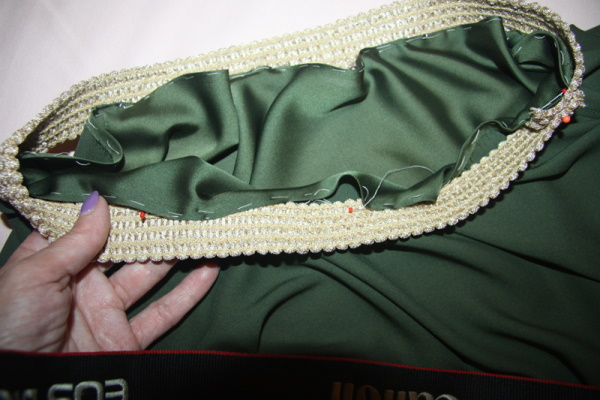
- The elastic should be sewn along the side cut, stretched and secured to the fabric with pins, dividing it into 8 equal parts.
- The top edge of the skirt needs to be pinned to the inner surface of the elastic band, with the allowances tucked inward.
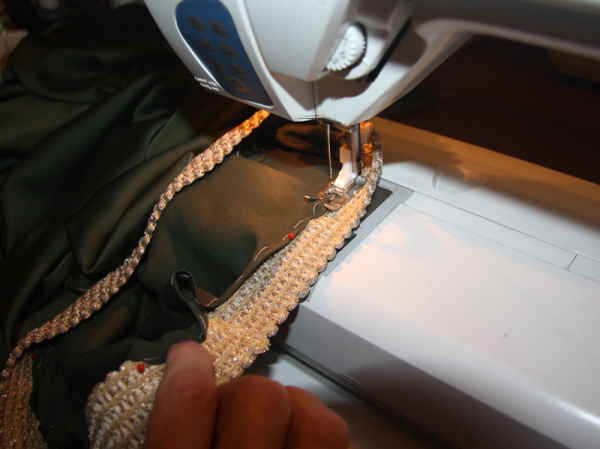
- When joining the borders of the sections, an even distribution of fabric is achieved along the waist cut.
The fabric must be sewn to the elastic using a straight seam, stretching it as you sew.
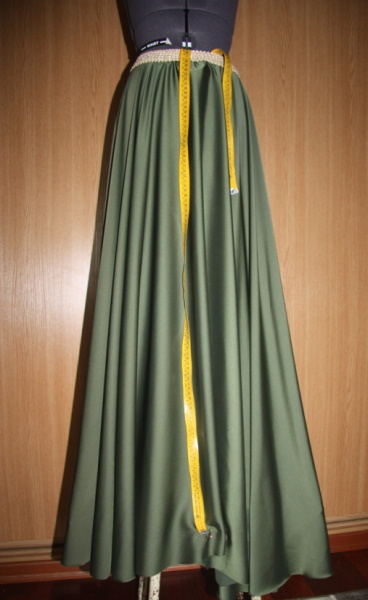
- Before hemming the bottom of the garment, it should be left to hang for 1-2 days, and then, using the shortest length of the skirt as a guide, it should be marked in a circle with a ruler and the excess fabric should be cut off.
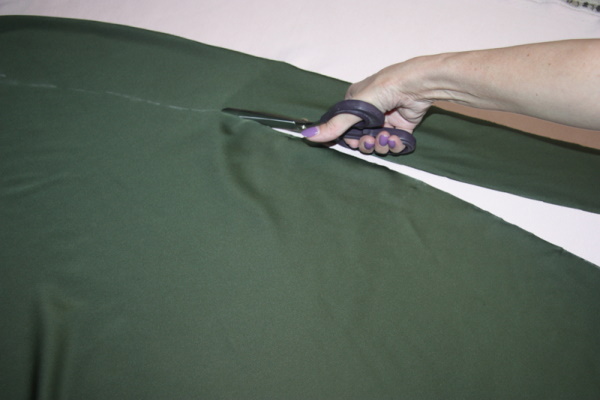
- Turn the fabric down 2-3 cm and stitch it in a circle.
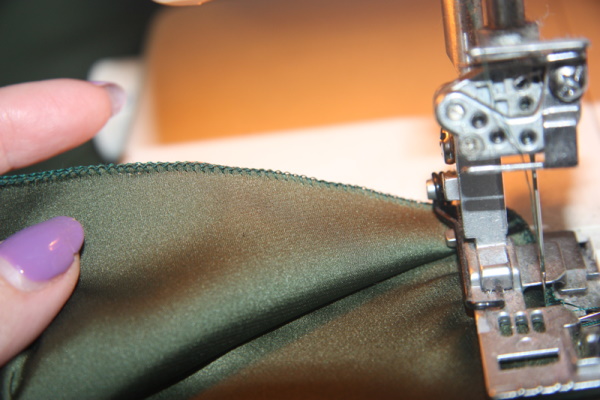
- The finished product should be ironed.
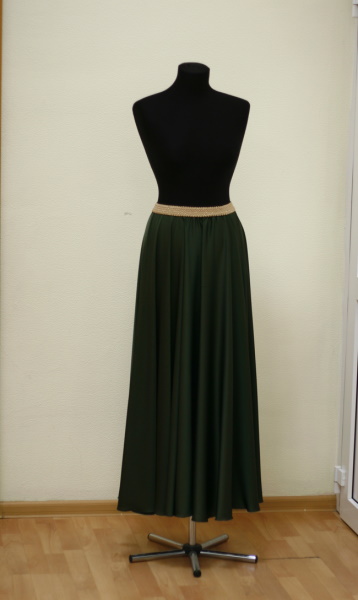
The job is done.
Straight skirt
Skirt patterns can be made for free in real size using paper with a millimeter scale, an eraser and a long ruler.
To make a pattern for a straight-cut skirt you will need:
- Calculate values equal to half the waist circumference (WC) and half the hip circumference (HCC), and then add 1 cm to each of the indicators.
- Draw a rectangle ABCD, where the values AD and BC will correspond to the length of the skirt, and the short indicators AB and CD will be equal to the value of the POB.
- Rectangle ABCD must be divided horizontally into 2 equal parts so that the division line TX is perpendicular to segments AB and CD.
- From points A, T and B, measure the distances down to points L1 and L2, corresponding to the height of the hips, and connect the resulting points.
- To calculate the size of the darts, subtract the value of POT from the value of POB. The resulting difference will correspond to the total size of the darts. 1⁄2 of this value should correspond to the size of the main side dart. The remaining value should be divided by 2 to obtain figures indicating the size of the front and back darts.

To make the model:
- The resulting pattern must be laid out on the fabric taking into account the position of the grain line, traced along the sample taking into account the seam allowance of 1.5 cm and cut out the details.
- Before starting to sew, it is recommended to process the edges of the fabric with an overlock or a zigzag stitch.
- It is not recommended to sew the parts together on a sewing machine right away. To prevent mistakes, professionals advise first to fold the parts of the product with the right sides facing each other and baste them, carefully matching the edges. After that, the product can be sewn by hand, following a certain sequence: first, you need to sew up the darts, starting from the narrow edge and moving upwards; baste the folds and cuts; baste the side seams, carefully matching all the pattern lines and moving from the waist line down from the front panel; fold and baste the upper and lower cuts. The width of the stitches when baste should be at least 0.5 cm, which will prevent them from coming apart when trying on the product.
- The hand-basted product must be tried on, which will allow you to adjust the side seams to the figure.
- At the final stage of making a straight skirt, you should lay a machine stitch 1 mm to the left of the winding seam line.
- First, the middle back seam is sewn, leaving a gap of 15-20 cm for sewing in the zipper, and then the machine stitch should be laid on the darts on both parts. Lastly, starting from the waist line, the side seams of the product are stitched.
- The top and bottom edges of the skirt should be finished with a circular machine stitch.
- After unzipping the zipper, first the left side and then the right side should be sewn to the back seam, placing a strip of interlining between the main fabric and the zipper.
- The finished product must be ironed, and all its edges must be processed with an overlock or a zigzag stitch.
A-Line Skirt
Patterns for A-line skirts can be copied from the Burda magazine.
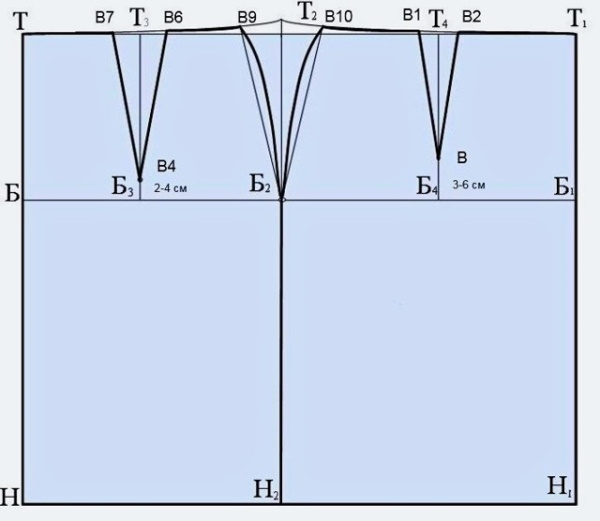
To construct this model, the classic design of a straight skirt is used: Point "T2", corresponding to the difference between the length of the skirt from the floor in the middle of the front and the length of the skirt from the floor along the side seam, is recommended to be raised up by 1-2 cm when making the product.

To create a trapeze skirt, the resulting pattern should be cut into 4 parts, and then, when combining the sides of the darts in pairs, open and spread the skirt along the bottom. To give the product additional volume, it is recommended to add an allowance of 3-10 cm to both sides of the side seam. The expansion of the skirt is made with smooth lines.
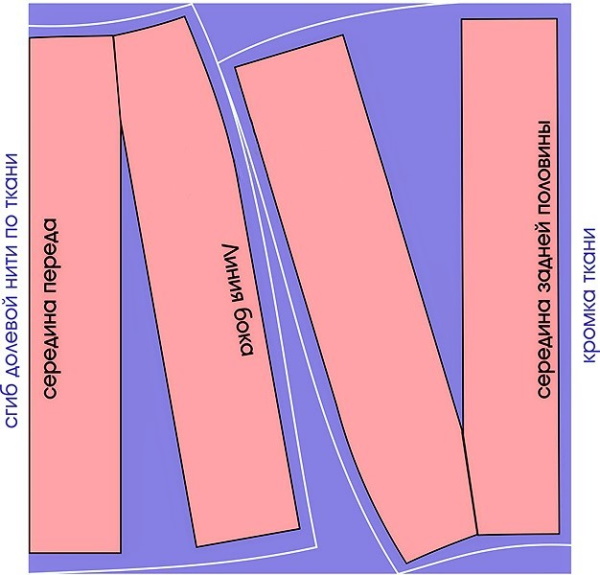
To make a trapeze skirt with an elastic band, you should:
- Lay out the skirt pattern on the fabric taking into account the direction of the main thread, trace the pattern (taking into account the seam allowance of 1.5 cm) with tailor's chalk and cut out the product.
- The paired side cuts need to be pinned, overcast, and then machine stitched. The resulting cuts should be processed with an overlock and ironed towards the back.
- Pin the belt folded in half to the top edge of the skirt, adjust its top length, and then, sewing the short sides, sew on the belt, first leaving a small opening of 1-1.5 cm in it for sewing in the elastic.
- Finish the top seam with a decorative wide elastic band, insert an elastic band into the waistband and secure the ends.
- Using an overlock, process the edge where the belt is sewn on.
- The bottom of the skirt needs to be folded down by 1 cm and finished with an edge seam.
A skirt of any style is made using special life-size patterns taken for free from fashion magazines or downloaded from the Internet. The classic pattern taken as a basis is adjusted depending on the parameters of the figure and taking into account the desired length, and then transferred to the fabric, allowing you to create the model you like without professional sewing skills.
Video about life-size skirt patterns
How to make a wrap skirt from this leather:
